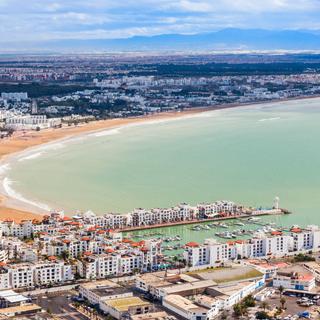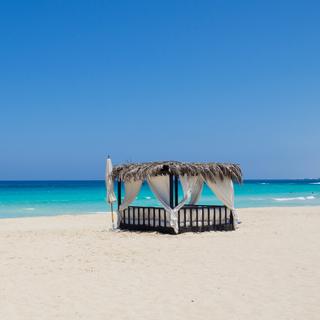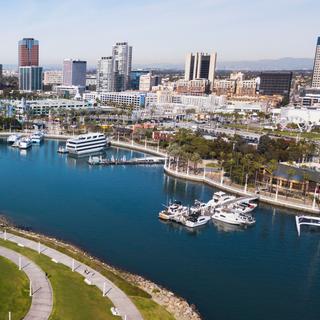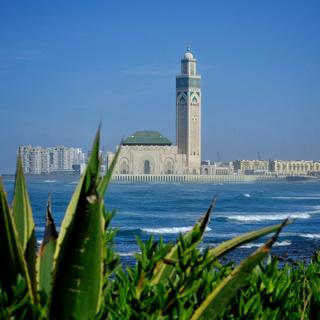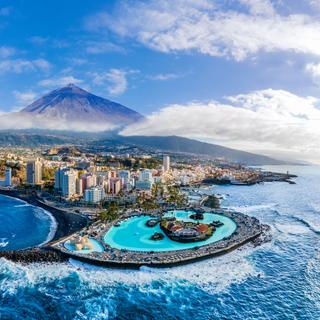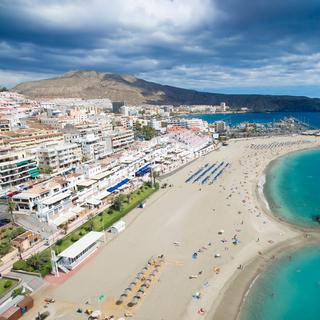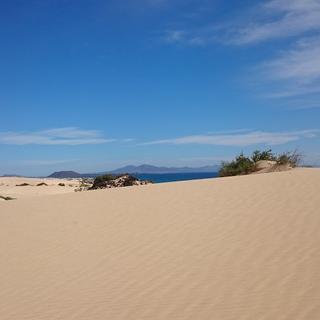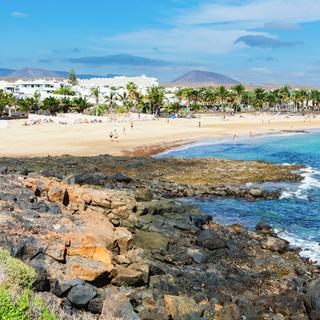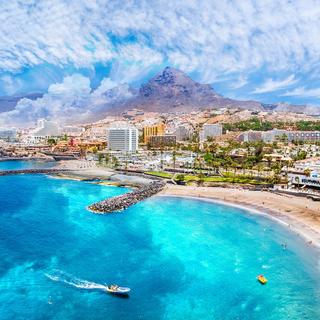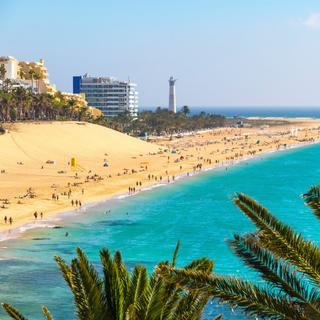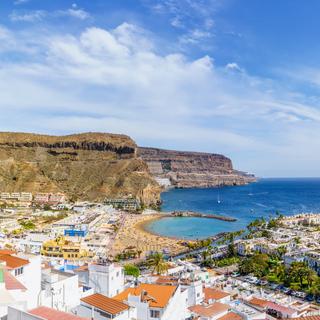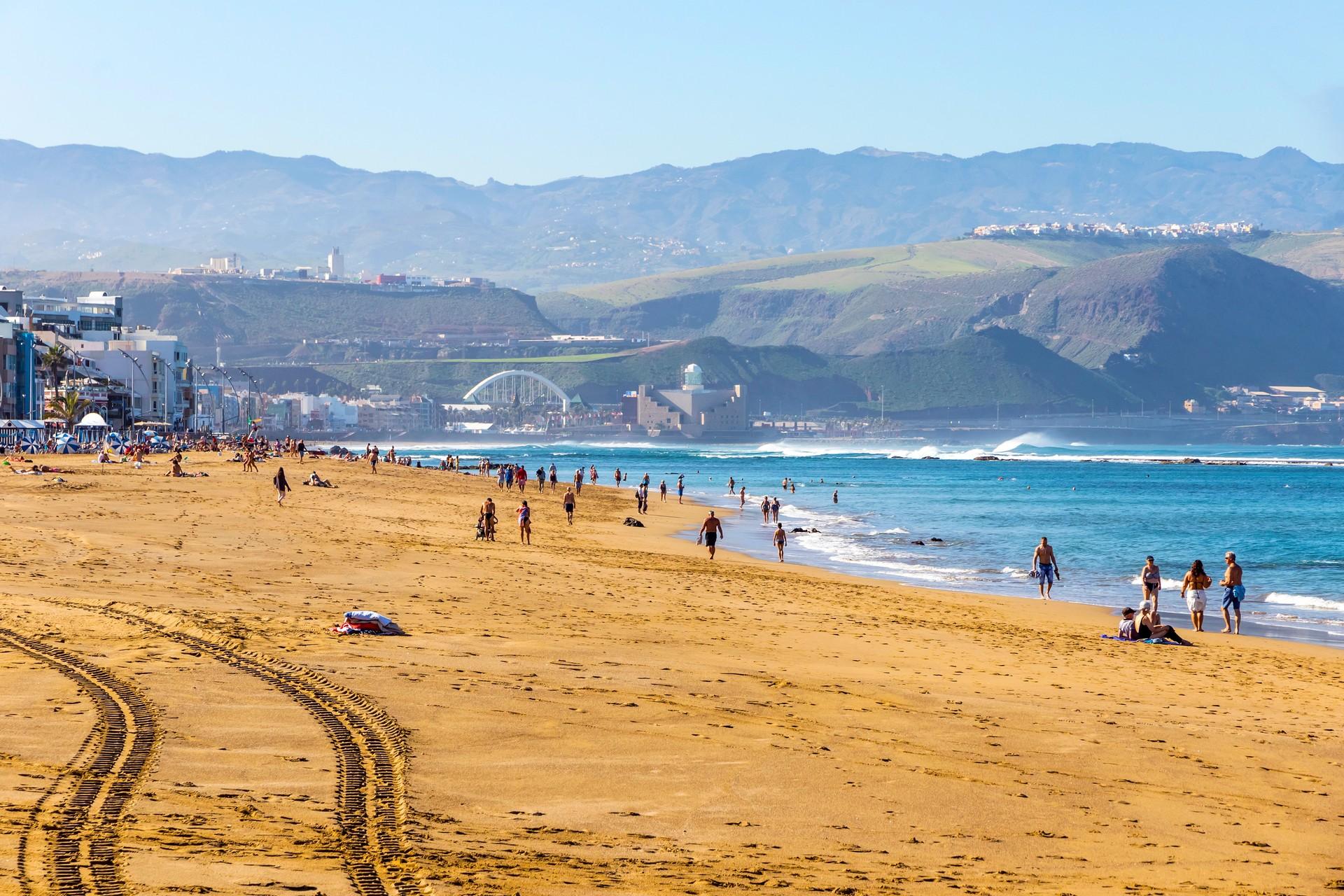
Las Palmas weather and climate

Las Palmas weather and climate
Day
28 °C
Night
19 °C
Sea
23 °C
Precipitation
1 mm
in month
Rainy days
0 days
in month
Daylight
13 hours
average
Sunshine
9 hours
average
Humidity
66 %
Weather charts for Las Palmas
Destinations nearby and activities
Destinations nearby
Activities in Las Palmas

Find more destinations like this
Destinations with similar weather to Las Palmas
Other destinations in Canary Islands - Spain
Closest cities for Las Palmas
Weather overview for Las Palmas
Weather overview
Las Palmas, Spain, is renowned for its tropical climate, offering a range of temperature fluctuations throughout the year. Daily temperatures span from a mild 20 °C (68 °F) in the chill of January to the peak of summer warmth at 28 °C (83 °F) in August. Night-time brings cooler air, with temperatures dipping to 14 °C (57 °F) in January and rising to a more temperate 20 °C (68 °F) in September. The enticing sea temperatures reach their zenith in September at a welcoming 23 °C (74 °F) and hit their nadir in March, dropping to a cooler 19 °C (66 °F). When it comes to precipitation, July proudly claims the title of the driest month, with barely 0 days of rainfall, while November contrasts as the wettest month, receiving rain on 5 days. Las Palmas sees an array of weather conditions year-round, from sunny days and clear skies to the occasional rainy spells and varying wind speeds, ensuring a diverse seasonal experience.
January weather
In January, Las Palmas experiences its lowest day temperatures at 20 °C (68 °F), while the sea temperature begins its decline to 19 °C (67 °F). The chill of the night is felt strongest this month, with temperatures reaching 14 °C (57 °F). The descent in the number of rainy days starts becoming evident.
February weather
February sees the sea temperature in Las Palmas continue to drop, registering at 19 °C (66 °F). With the passing of days, the number of sunlit hours begins to incrementally increase.
March weather
March marks the lowest sea temperature measured at 19 °C (66 °F) in Las Palmas, while day temperatures commence their ascent. A decrease in rainfall and rainy days heralds the arrival of the dry season.
April weather
The downward trend of rainy days persists through April in Las Palmas, along with a reduction in rainfall, measured at 13 mm (0.53 in). The dry season persists, and with it, the number of cloudless sunny hours begins to increase, noted at 8 hours.
May weather
As May unfolds in Las Palmas, a rise in both day and sea temperatures can be observed. The decrease in rainfall continues, and the number of rainy days is noted at a minimal 1 day. Night temperatures also begin to edge upwards. The sequence of increasing sunlit hours carries on from April.
June weather
June heralds the approach of the high tourist season in Las Palmas. Sea temperatures are on the rise, recorded at 21 °C (70 °F), paralleling the increase in day temperatures, which stand at an enjoyable 25 °C (77 °F). The growing number of sunny hours continues with 9 hours recorded, and night temperatures remain on the uptrend, noted at 17 °C (63 °F). Additionally, the peak in wind speeds can be observed, reaching 5 m/s.
July weather
Tourism activity becomes more pronounced in July in Las Palmas. Day temperatures keep rising, hitting 27 °C (80 °F), while the sea temperature also makes a similar incremental increase. An all-time low in the number of rainy days is hit, at just 0 days, and July also marks the peak in rainfall scarcity. The max number of sunlit hours is achieved this month with 9 hours.
August weather
During the vibrant tourist season in August, Las Palmas experiences its highest day temperatures, reaching 28 °C (83 °F). Concurrently, sea temperatures continue their upward trend, now at 23 °C (73 °F). A rise in nighttime temperatures is also evident, with the evening warmth measured at 19 °C (67 °F).
September weather
The prominent tourist season in Las Palmas is ongoing in September, with day temperatures beginning to slightly decrease, resting at 27 °C (81 °F). The sea temperature reaches its annual peak, being measured at 23 °C (74 °F). Additionally, a rise in both the number of rainy days and the volume of rainfall can be seen at the outset of September, along with the maximum night temperature seen in the course of the year at 20 °C (68 °F).
October weather
As the season transitions, October sees a continued decrease in day temperatures, registering 26 °C (79 °F) in Las Palmas. The night temperatures too begin to cool, noted at 18 °C (65 °F). The approach of post-tourist seasonality is apparent. The quantity of rainy days further increases, noted at 3 days, and the rise in rainfall continues, with 19 mm (0.76 in) being measured. The wind speed attains its annual low point, coming in at 4 m/s.
November weather
In November, Las Palmas begins to feel a slight chill as both the sea temperatures, now at 22 °C (71 °F), and day temperatures continue their descent. The high point for rainy days is reached, with a total of 5 days observed, and rainfall volumes rise in accordance with the previous month. The decline in nighttime temperatures is also noticeable, being recorded at 17 °C (63 °F). The number of hours without sunshine begins its downward trend, with the count at 6 hours.
December weather
December witnesses a further drop in day temperatures, which now stand at 21 °C (71 °F) in Las Palmas, and the sea temperature also declines. The night temperatures continue their descent, their level being 15 °C (59 °F). The shortest duration of daylight is notable within this month, with a measure of 10 hours. The acumulation of rainfall for the year reaches its peak this month.
FAQs
What is the level of humidity in Las Palmas during January?
Expect a relative humidity of approximately 69 % in Las Palmas throughout January.
What can I expect in terms of sea temperature in February in Las Palmas?
In February, the sea temperature in Las Palmas continues its seasonal decline, resting at approximately 19 °C (66 °F).
Is March a windy month in Las Palmas?
In March, you can anticipate an average wind speed of around 4 m/s in Las Palmas.
How many hours of clear skies will I experience in Las Palmas during April?
In April, Las Palmas basks in an average of 8 hours of sunshine each day.
Is May typically considered part of the dry season in Las Palmas?
Yes, May falls within the dry season in Las Palmas, with only about 1 day expected to be rainy.
What should I anticipate in terms of daytime temperatures in Las Palmas for the month of June?
June in Las Palmas is characterized by an average daytime temperature of about 25 °C (77 °F), conducive to outdoor leisure and water-based activities.
What's the usual count of rainy days in July for Las Palmas?
In July, Las Palmas witnesses an exceptionally low average of only 0 days rainy days.
Does August in Las Palmas get particularly hot?
August in Las Palmas offers warm and comfortable weather, commonly considered to be not excessively hot by most visitors.
How warm is the sea during September in Las Palmas?
In September, the sea temperature in Las Palmas peaks at a pleasant 23 °C (74 °F), suitable for most to swim and relax in.
Is October an opportune time for a visit to Las Palmas?
October emerges as an optimal month for a visit to Las Palmas, with daily temperatures providing comfort at an agreeable 26 °C (79 °F), and sea temperatures still favorable at 23 °C (73 °F).
What are the expected night temperatures in November in Las Palmas?
During November, the night temperatures in Las Palmas average out to a comfortable 17 °C (63 °F), ideal for a variety of nocturnal and outdoor activities.
Is Las Palmas prone to a wet season in December?
Despite being the time of year with the highest average rainfall, December in Las Palmas is not considered part of a wet season, with expected rain occurring on approximately 5 days of the month.
